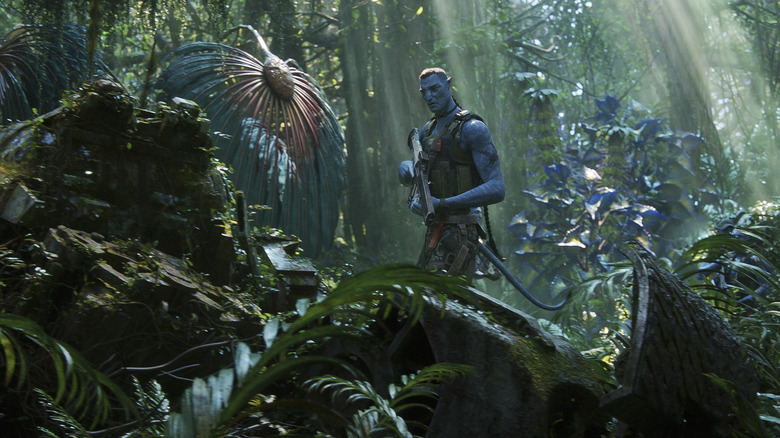Jon Landau Hopes Avatar 2's Technology Opens Up Possibilities For Filmmakers
No movie in 2022 made quite as big of a splash as "Avatar: The Way of Water." The behemoth blockbuster is a sequel to the groundbreaking 2009 film, which is currently the highest-grossing film of all time — though that may not be the case in the coming months.
The lead-up to the film's release was filled with reports and speculation about the film's reportedly massive budget, which The Hollywood Reporter estimates was as high as $400 million. Director James Cameron even told GQ that the sequel would need to be one of the highest-grossing films of all time just to break even, and — lucky for him — it recently cracked the top five (of these films, Cameron has now directed three).
Much of this budget was spent on the technology required to create "The Way of Water's" boundary-pushing special effects. To craft Pandora's newfound aquatic-based biome, Cameron and his VFX team at Wētā had to use new algorithms, A.I., and camera rigs (per The Verge), which allowed them to create moments the first film couldn't. For producer Jon Landau, the new tech developed for the "Avatar" films could help artists work with VFX in the future.
How the Simulcam changes CGI filmmaking
Discussing "Avatar: The Way of Water" with Collider, Jon Landau spoke about the technology they used to shoot the film — primarily the Simulcam, which was first developed to shoot 2009's "Avatar." The revolutionary camera rig allows camera operators to physically film virtual spaces while displaying a rough computer-generated model of what the scenes look like on a monitor. In other words, rather than animating an entire scene from scratch or simply shooting actors against a green screen (which would be animated over later), the Simulcam allows directors to shoot scenes with CGI elements as though they were actually on set (for a visual demonstration, check out this behind-the-scenes featurette, courtesy of All Games).
Landau thinks even filmmakers not trying to make a $400 million blockbuster could benefit from this device, telling Collider, "...not every movie has computer-generated characters in it, but a lot of movies now today shoot green screen or blue screen, and those elements aren't there, and directors are left to try and imagine what's there. Our tools allow others to see what would be there..."
He explained that no one involved with developing "Avatar's" technology wants to gatekeep its use. Instead, he hopes these "tools" will simply become standard across the board. "I hope that it unlocks a door that other filmmakers now really believe, if they dream it, they can do it," he said. "Because I want to see those movies, I want to experience those movies."

